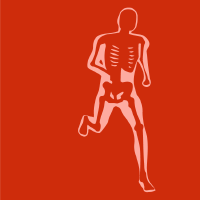Topic Menu
► Topic MenuSports Medicine
Topic Information
Dear Colleagues,
It is now commonly agreed that exercise is an efficient strategy for preventing a wide variety of pathological conditions such as osteoporosis, sarcopenia and diabetes, as well as cardiovascular and neurodegenerative diseases. Furthermore, confirming the powerful beneficial effect of sport on human health, exercise is often indicated as an effective non-pharmacological therapeutic strategy to counteract the health impact and progression of many chronic and/or degenerative diseases. The personalisation of training programmes to the individual’s needs could be the key to optimising the beneficial effects of exercise both in healthy patients and in patients with poor health, facilitating the management of chronic and degenerative diseases. In this context, sports medicine represents a fundamental link between practical exercise and basic science, as it aims to provide a scientific assessment of the effects of sport on health. However, although the effects of exercise are well known and extensively documented, the underlying molecular mechanisms are often elusive, and their complete understanding has yet to be achieved. A better understanding of the physiological adaptations to exercise is crucial for the development of personalised training programmes aimed at maximising the preventive and/or therapeutic role of sport.
Therefore, this Topic aims to bring together the latest evidence in the field of sports medicine to i) deepen our knowledge of biological/molecular adaptations to exercise and ii) understand how a training programme tailored to the individual’s needs can improve sports performance.
Thank you the assistance and support from Dr. Ida Cariati and Dr. Roberto Bonanni.
Prof. Dr. Virginia Tancredi
Topic Editors
Keywords
- exercise
- training protocol
- sports performance
- chronic diseases
- degenerative diseases
- prevention and treatment
Participating Journals
| Journal Name | Impact Factor | CiteScore | Launched Year | First Decision (median) | APC |
|---|---|---|---|---|---|

Biomedicines
|
4.7 | 3.7 | 2013 | 15.4 Days | CHF 2600 |

Healthcare
|
2.8 | 2.7 | 2013 | 19.5 Days | CHF 2700 |

International Journal of Environmental Research and Public Health
|
- | 5.4 | 2004 | 29.6 Days | CHF 2500 |

Journal of Functional Morphology and Kinesiology
|
- | 3.7 | 2016 | 17.6 Days | CHF 1600 |

Sports
|
2.7 | 5.2 | 2013 | 19.3 Days | CHF 1800 |

MDPI Topics is cooperating with Preprints.org and has built a direct connection between MDPI journals and Preprints.org. Authors are encouraged to enjoy the benefits by posting a preprint at Preprints.org prior to publication:
- Immediately share your ideas ahead of publication and establish your research priority;
- Protect your idea from being stolen with this time-stamped preprint article;
- Enhance the exposure and impact of your research;
- Receive feedback from your peers in advance;
- Have it indexed in Web of Science (Preprint Citation Index), Google Scholar, Crossref, SHARE, PrePubMed, Scilit and Europe PMC.


